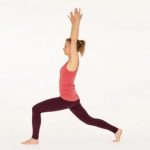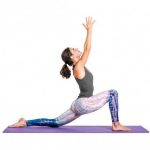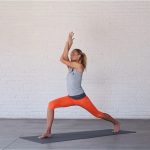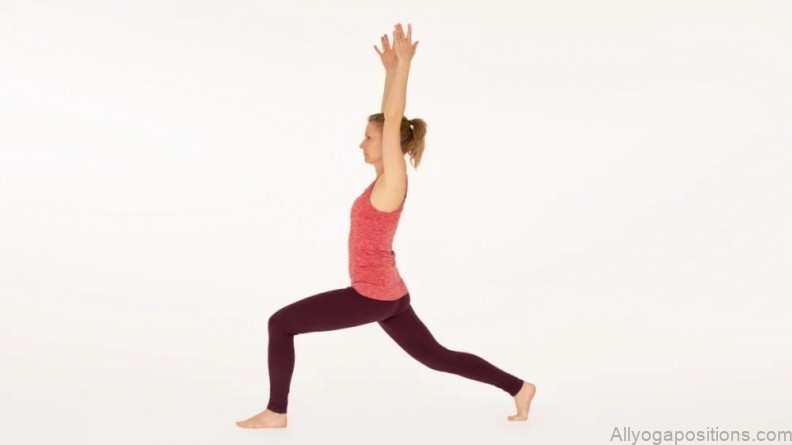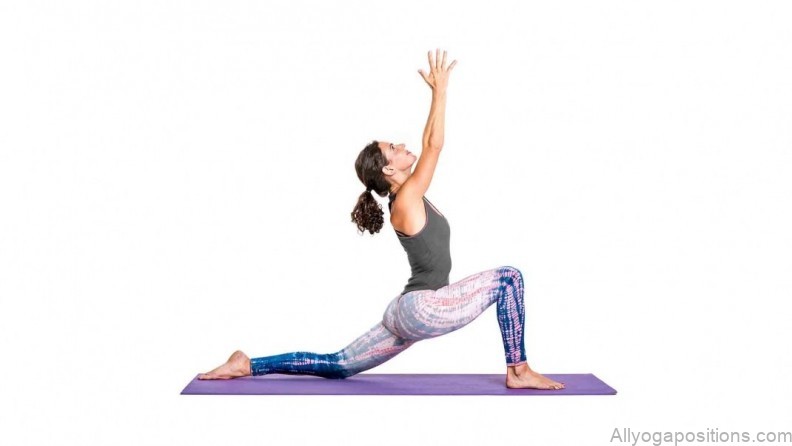Crescent Lunge, or Anjaneyasana, is a popular yoga pose that stretches and strengthens the hips, legs, and core. It is a versatile pose that can be modified to suit all levels of yoga practitioners, from beginners to advanced yogis. In this guide, we will explore the benefits of Crescent Lunge and provide step-by-step instructions on how to practice the pose safely and effectively.
What is Crescent Lunge?
Crescent Lunge is a yoga pose that involves a lunge with one leg forward and the other leg back, with the back foot lifted off the ground. The front knee is bent, while the back leg is straight and strong. The arms can be raised overhead or held at the sides of the body. The pose is named after the shape of the body, which resembles a crescent moon.
To get into Crescent Lunge, begin in Mountain Pose at the top of your mat. Step your left foot back, keeping your toes tucked under, and lower your back knee to the ground. Inhale and lift your arms overhead, keeping your shoulders relaxed and your gaze forward. Exhale and sink into your front knee, keeping your knee over your ankle and your back leg straight. Hold the pose for several breaths before releasing and repeating on the other side.
Master the Crescent Lunge Yoga Pose: A Guide for All Levels Photo Gallery
Benefits of Crescent Lunge
- Opens the hips: Crescent Lunge is a great hip opener that can help alleviate tension in the hips and improve flexibility.
- Strengthens the legs: The pose requires strength in the legs, particularly in the quadriceps and glutes.
- Improves balance: Holding the pose requires balance, which can help improve overall stability and coordination.
- Promotes mindfulness: The focus required to maintain balance and hold the pose can help quiet the mind and promote mindfulness.
- Enhances the mind-body connection: The pose requires concentration and focus, which can help enhance the mind-body connection.
Precautions and Modifications
As with any yoga pose, it is important to practice Crescent Lunge safely and effectively. Here are some precautions and modifications to keep in mind:
- If you have any injuries or conditions that affect your hips, knees, or ankles, it is best to avoid this pose or modify it as needed.
- If you have trouble balancing, you can use a wall or chair for support.
- If you have trouble lowering your back knee to the ground, you can place a blanket or cushion underneath it for support.
Modifications for Beginners
If you’re new to yoga or have limited flexibility, here are some modifications you can use to practice Crescent Lunge safely and effectively:
- Use a chair or wall for support: If you have trouble balancing, you can use a chair or wall for support. Place your hands on the chair or wall as you sink into the pose, and use the support to help you maintain balance.
- Use a block or cushion: If you have trouble lowering your back knee to the ground, you can place a block or cushion underneath it for support.
- Take smaller steps: If you have trouble stepping your back foot all the way to the back of your mat, you can take smaller steps until you find a comfortable distance.
Modifications for Advanced Practitioners
If you’re an advanced yogi looking to deepen your practice, here are some modifications you can use to challenge yourself in Crescent Lunge:
- Lift your back foot: Instead of keeping your back foot on the ground, lift it off the ground and hold it parallel to the floor. This will challenge your balance and strengthen your legs and core.
Tips for Practicing Crescent Lunge
Here are some additional tips to keep in mind as you practice Crescent Lunge:
- Engage your core: As you sink into the pose, engage your core muscles to help support your back and maintain stability.
- Keep your shoulders relaxed: It can be easy to tense up your shoulders in this pose, so make sure to keep them relaxed and away from your ears.
- Breathe deeply: Deep breathing can help you stay present and focused in the pose. Inhale deeply as you lift your arms overhead, and exhale as you sink into your front knee.
- Be mindful of your alignment: Make sure to keep your knee over your ankle and your back leg straight and strong. You can also use a mirror or a friend to check your alignment and make sure you are practicing the pose correctly.
Incorporating Crescent Lunge into Your Yoga Practice
Crescent Lunge is a versatile pose that can be incorporated into a variety of yoga practices, including vinyasa flow, hatha, and yin yoga. Here are some ways you can incorporate the pose into your practice:
- Warm-up: Crescent Lunge is a great pose to include in your warm-up sequence, as it can help prepare the hips and legs for more challenging poses.
- Sun salutation: Crescent Lunge is a common pose in sun salutations, a popular yoga sequence that is often used as a warm-up or as a complete practice on its own.
- Standing sequence: You can include Crescent Lunge in a standing sequence that focuses on building strength and flexibility in the legs and hips.
- Cool-down: Crescent Lunge can also be used in a cool-down sequence, as it can help release tension in the hips and prepare the body for relaxation.
Final Thoughts
Crescent Lunge is a powerful yoga pose that can help improve flexibility, strength, and balance. Whether you’re a beginner or an advanced yogi, this pose can be modified to suit your level of practice. Remember to practice safely, engage your core, and breathe deeply as you sink into the pose. With consistent practice, you can master Crescent Lunge and experience the many benefits of this popular yoga pose.
Table of Contents
Maybe You Like Them Too
- Mastering Virabhadrasana A: The Warrior Pose of Empowerment
- Embracing the Essence of Wide Legged Forward Bend: A Deep Dive
- Unlocking the Power of Prasarita Padottanasana: The Wide-Legged Forward Bend
- The Power and Elegance of the Wide Legged Forward Bend II Yoga Pose
- Mastering the Warrior II Pose: A Deep Dive into Its Benefits and Techniques

